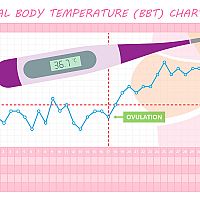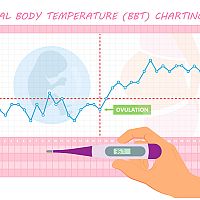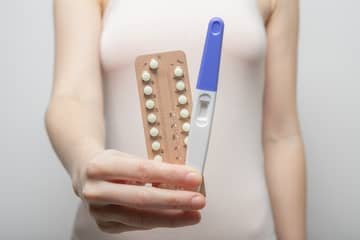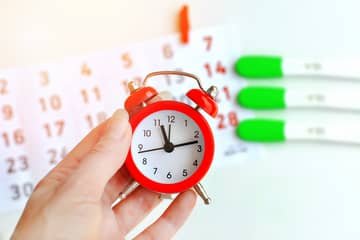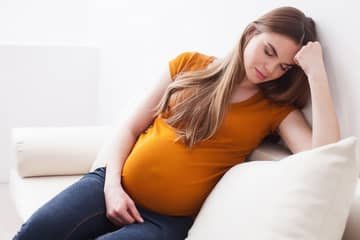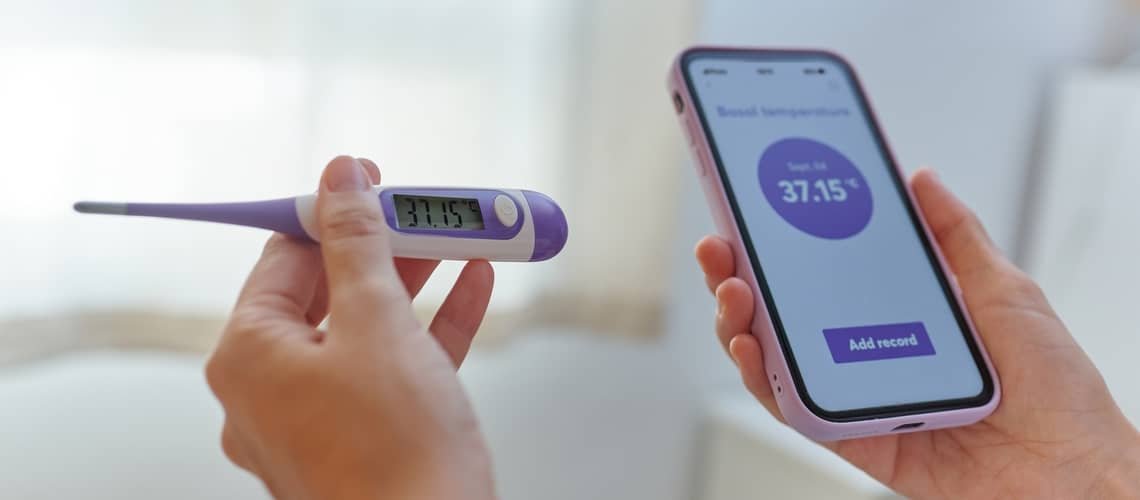
Basal temperature before menstruation, after ovulation and during pregnancy
While some women get pregnant quickly and easily, and sometimes even unintentionally, for others, a complicated journey involving careful and accurate tracking of fertile days and the entire menstrual cycle leads to successful fertilization. One of the authoritative factors that a woman wishing to have a baby should regularly check is the basal temperature.
- What is basal body temperature?
- How is the basal temperature measured?
- Thermometer for measuring basal temperature
- Basal temperature chart
- Basal temperature - before menstruation, during pregnancy, after ovulation, after fertilization, after nesting
- Ovulation calendar to calculate fertile days
- Basal temperature - experience
- The most frequent questions - FAQ
- Comments
In the following paragraphs of our article, we will clarify how the basal temperature changes on fertile days, how the measurement of the basal temperature should take place and what is involved in monitoring the female cycle through the ovulation calendar.
What is basal body temperature?
Basal body temperature is the resting temperature of the human organism, and thus the thermal state of a person in a state of rest. Measuring the basal temperature is considered one of the methods of natural contraception. It is therefore a way of monitoring a woman's cycle, regardless of the reason that leads a woman to closely monitor this process taking place in her body.
This means that a woman who is trying to get pregnant can regularly check her basal body temperature, but a woman with the intention of preventing possible fertilization can also resort to this act. However, it should be noted that basal temperature measurement without any other associated method to create a detailed and regular overview of a woman's menstrual cycle is not considered a reliable way to achieve the intended goal.
Even so, basal temperature reveals many aspects of a woman's cycle, such as the fertile window or approaching menstrual days. In addition, if a woman records individual data in a chart, she can easily read any deviations in her cycle from it.
The measured values of the basal temperature naturally fluctuate due to the influence of the changing levels of estrogen and progestogen, and thus the female sex hormones in the ovaries. During the individual intervals characteristic of the female cycle or the pregnancy process itself, there are differences in the production of the named hormones.
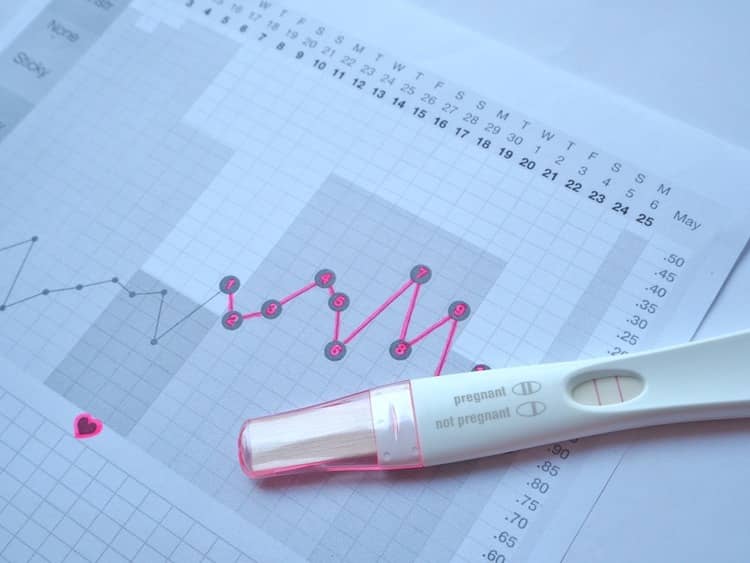
How is the basal temperature measured?
First of all, it is necessary to clarify the place where the thermometer for measuring the basal temperature needs to be placed in order to measure the given value. The basal temperature of a woman's body is usually measured in the mouth or anus, but the measurement is also usually performed in the area of the vaginal opening.
A very important aspect of this measurement and monitoring of basal temperature values is the constancy of all variables. In essence, this means that a woman should always measure her basal temperature at the same time in the morning, while she should use the same thermometer and always place it in the same place. From the point of view of the measurement time, a deviation of at most half an hour is acceptable.
This means that if she first performed this act at 7:30 in the morning by inserting her old digital thermometer into the vaginal opening, under no circumstances should she change these factors in subsequent measurements. Even the smallest change in any of the named parameters could affect the results recorded in the graph or table.
So, regardless of whether it is a weekend or a weekday, the measurement should always be carried out in the same time frame, and it does not matter whether the woman bought a new thermometer during her next visit to the pharmacy, which she would like to use for this operation.
Since it is a measurement of the body's resting temperature, it is very important that the woman remains completely still after waking up . So she should not get out of bed and perform any of the basic activities associated with morning hygiene or other preparation for the beginning of the day. Also for this reason, it is ideal if the thermometer is stored near the bed, preferably on the bedside table.
To a large extent, it depends on the circumstances that could affect the state of the female organism in any way. First of all, it is a healthy sleep regime. From this point of view, the point is that a woman should measure her basal temperature only if she has had a continuous sleep with an ideal length of three to six hours.
Inaccurate results can be the result of inflammatory diseases in the female body, the use of drugs or alcohol consumption, while the measured value of the basal temperature can be significantly affected by emotional stress, physical and psychological activity.
Among the external influences, it is necessary to mention the different climate of the environment where the woman performs the measurement, which can occur as a result of traveling. In this regard, there is nothing to be surprised about, since certain deviations in the measured values can be caused by even a slight change in the room in which a woman usually measures her basal temperature.
The optimal time to start the entire basal temperature measurement process for a woman is the first day of menstruation. In order to obtain the most accurate results from the measured values, it is necessary to regularly record them in the basal temperature graph, immediately after the measurement. Any deviations in the values or changes in the measurement time, such as the use of a different thermometer or a change in health, must be written in the notes under the chart.
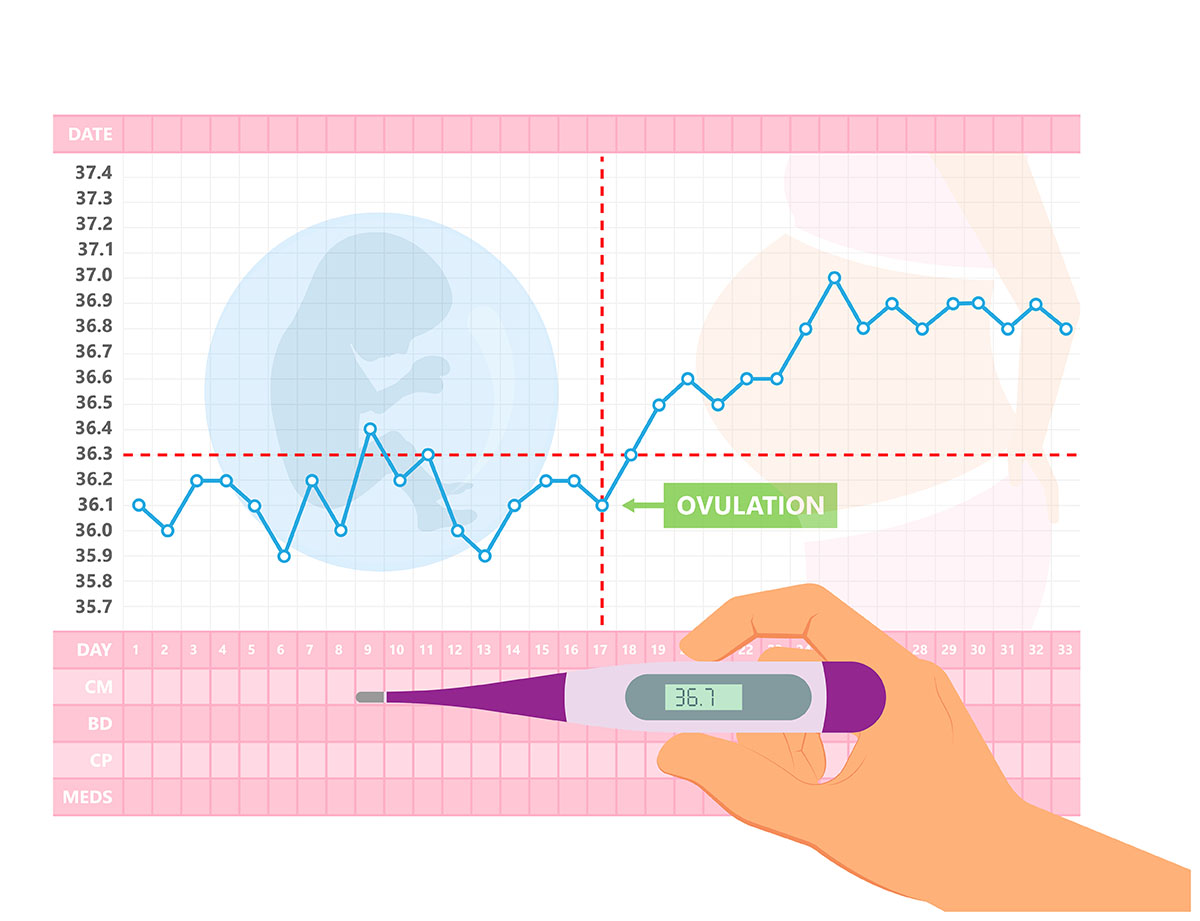
Thermometer for measuring basal temperature
In the interests of the most accurately measured basal temperature values, it is advisable to get a high-quality digital thermometer that works on the principle of two decimal places. Although today, women no longer have to rely on ordinary thermometers, because thermometers specifically designed for measuring basal body temperature are freely available on the market. They are even perfectly adapted in shape to the "vaginal" measurement.
There is an obvious difference in the time interval required for a successful measurement between a classic mercury thermometer and a digital thermometer. While the mercury thermometer requires at least five minutes to measure the temperature, the digital one can do its job within two minutes, signaling the end of the measurement process with a beep.
As we mentioned above, it is recommended to measure the basal temperature regularly in the same area of the female body. The justification for this criterion is simple. The values that the thermometer measures in the woman's vagina are usually higher by 0.3 to 0.6 degrees. This means that if a woman measures her basal temperature in her mouth on the first day and in her private parts on the next day, there will be a significant deviation in the measurement.
Basal temperature chart
The measured values of the basal temperature must be regularly recorded in a graph, which creates a clearer system in the mapping of the female cycle. A woman can make such a chart with her own hands. It is important that it traditionally consists of one horizontal axis (x) with the individual days of measurements written, from the first day of the menstrual cycle to the last, and one vertical axis (y) that contains rising temperature values.
After each morning measurement, it is necessary to record the given value in the graph, in the form of a dot, or balls. Connecting these points creates an alternately rising and falling line indicating the fluctuation of basal temperature values during the menstrual cycle of a woman.
As we mentioned above, you should not forget all the deviations, such as unusual measurement time, change of environment, travel, infections of the genital tract, change in the consistency or color of the vaginal discharge, but also the record of sexual intercourse. It is best to write them down directly under the chart in the form of notes.
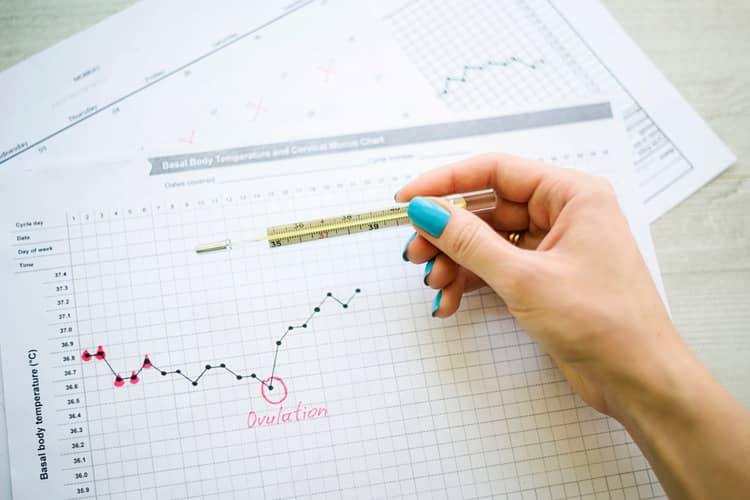
Basal temperature - before menstruation, during pregnancy, after ovulation, after fertilization, after nesting
The basal temperature of a woman's body changes during the entire menstrual cycle, which creates the need to record the measured values in a graph or table. The basal temperature before menstruation, but also in its beginnings, is naturally lower, around 36.5 °C, while during ovulation there is a certain reduction to 35.7 to 36.5 °C.
However, after ovulation, the basal temperature rises to a value of 36.7 to 36.9 degrees Celsius. An increase in the measured temperature of the female body at rest is caused by an increased level of progesterone, and thus the hormone produced by the corpus luteum after the ovulation phase of the female cycle.
If the measured data do not fall to the original value of 36.5 °C from the beginning of ovulation, and thus a high basal temperature occurs in the long term, the process of successful fertilization of the egg has taken place in the woman's body. In the event that for a period of 18 or more days the woman does not register a deviation in the measured values compared to the post-ovulatory data, this is a common phenomenon reflecting a change in the woman's condition after successful fertilization and implantation of the egg.
Failure, on the contrary, is indicated by a reduced temperature before the next menstrual cycle. When measuring the basal temperature, a woman can follow the so-called by the 3 to 6 rule, according to which it is valid that ovulation has taken place if, within 3 consecutive days, the basal temperature has reached consistently higher values than in the previous 6 days.
A big disadvantage of basal temperature mapping is the fact that an increased value can either indicate the beginning of pregnancy, or it can be a completely normal sign of the end of the fertile period. Also for this reason, it is advisable to apply another method of determining fertile days, for example in the form of one-time ovulation tests, in addition to the method related to the basal temperature and its measurement.
However, it is necessary to realize that every woman's cycle is individual, and therefore there may be deviations both in the length of the individual phases of the cycle and in the basal temperature values themselves.
Ovulation calendar to calculate fertile days
If a woman does not want to rely only on measuring the basal temperature when monitoring the cycle, she can try mapping the menstrual cycle with the ovulation calendar. The disadvantage of this method is its unreliability in the case of women who experience irregularities throughout the cycle.
In order to be able to determine the exact day of ovulation and the time horizon of fertile days, a woman must have an overview of the length of her menstrual cycle. According to correctness, the first day of menstruation should be recorded, while the last day of a woman's cycle is usually the day before the next menstruation. The menstrual cycle therefore takes an average of 28 days.
Ovulation occurs somewhere in the middle of the cycle, and from the sixth to the tenth day after the start of menstruation, a woman is infertile. On the contrary, her fertile days start on the 11th day after the start of bleeding and last until the 15th day. Ovulation occurs on the 14th day. Based on this information, it is possible to deduce that the most suitable time to have sexual intercourse with the aim of having a baby is during the 13th to 15th day of the cycle.
When trying to get pregnant, you need to count on the other half of the equation, namely the sperm, whose lifespan reaches several days, so fertile days are counted up to the 18th day from the start of menstruation. Subsequently, we consider the time interval between the 19th and 28th day as infertile days.
The length of the overall cycle can be constantly variable, so it is necessary for a woman to keep her ovulation calendar carefully without a break for a period of eight months to one year, while in the case of this method it is also necessary to use basic mathematical operations, such as subtraction.
A woman can calculate the first fertile day by subtracting the number 18 from the final number of days of her shortest cycle, while the last fertile day is obtained by subtracting the number 11 from the number of days of the longest recorded cycle so far.
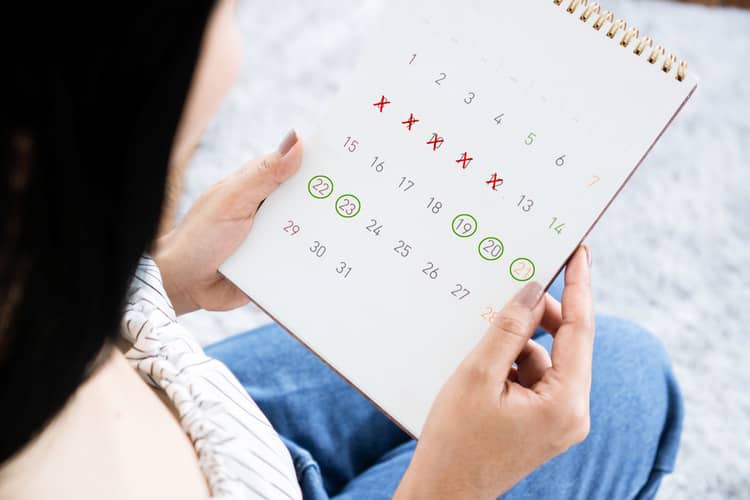
Basal temperature - experience
Experiences with basal temperature agree in many respects. According to the women on the discussion forums, it is a very specific method that requires determination and constancy. Therefore, it is not suitable for every woman.
Another often cited factor that brings stress to the lives of women trying for a baby is the sensitivity of the ovulation mapping method. This is a technique sensitive to the slightest change in a woman's organism.
However, many women have confirmed that basal temperature monitoring is proven and functional. After all, each woman's case is individual, which means that temperature fluctuations, as well as the length of the cycle, can be different. Therefore, it is advisable to bet on a combination of basal temperature measurement and another method for mapping fertile days.
The most frequent questions - FAQ
In our article, we tried to cover all aspects of basal temperature measurement, while we also summarized some additional information in the question and answer section. However, if you still don't have the answers you need, don't hesitate to use our comments section . We try to respond to them as soon as possible.
Can performing a small need affect the measured value of the basal temperature?
Do I have to record the measured values manually?
Is it better to measure the basal temperature in the mouth or in the vagina?
Is an elevated basal temperature in the early stages of pregnancy normal?
Can I measure my basal temperature during the day?
Can I rely on basal temperature measurement if I want to use the method as a method of contraception?
Gallery
Pridať komentár


